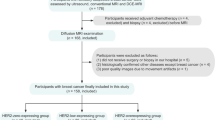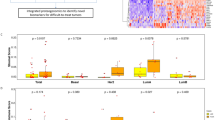Abstract
Sarcomas are malignant tumors from mesenchymal tissue and are characterized by their complexity and diversity. The high recurrence rate making it important to understand the mechanisms behind their recurrence and to develop personalized treatments and drugs. However, previous studies on the association patterns of multi-modal data on sarcoma recurrence have overlooked the fact that genes do not act independently, but rather function within signaling pathways. Therefore, this study collected 290 whole solid images, 869 gene and 1387 pathway data of over 260 sarcoma samples from UCSC and TCGA to identify the association patterns of gene–pathway–cell related to sarcoma recurrences. Meanwhile, considering that most multi-modal data fusion methods based on the joint non-negative matrix factorization (NMF) model led to poor experimental repeatability due to random initialization of factorization parameters, the study proposed the singular value decomposition (SVD)-driven joint NMF model by applying the SVD method to calculate initialized weight and coefficient matrices to achieve the reproducibility of the results. The results of the experimental comparison indicated that the SVD algorithm enhances the performance of the joint NMF algorithm. Furthermore, the representative module indicated a significant relationship between genes in pathways and image features. Multi-level analysis provided valuable insights into the connections between biological processes, cellular features, and sarcoma recurrence. In addition, potential biomarkers were uncovered, while various mechanisms of sarcoma recurrence were identified from an imaging genetic perspective. Overall, the SVD–NMF model affords a novel perspective on combining multi-omics data to explore the association related to sarcoma recurrence.
Graphical Abstract








Similar content being viewed by others
Data availability
The data that support the findings of this study are openly available in the Cancer Genome Atlas (TCGA) website (https://www.cancer.gov/) and the University of California Santa Cruz (UCSC) website (https://genome.ucsc.edu/).
References
Daw N, Chou A, Jaffe N et al (2015) Recurrent osteosarcoma with a single pulmonary metastasis: a multi-institutional review. Br J Cancer 112(2):278–282. https://doi.org/10.1038/bjc.2014.585
Burningham Z, Hashibe M, Spector L et al (2012) The epidemiology of sarcoma. Clin Sarcoma Res 2(1):1–16. https://doi.org/10.1186/2045-3329-2-14
Liang Y, Guo T, Hong D et al (2020) Time to local recurrence as a predictor of survival in patients with soft tissue sarcoma of the extremity and abdominothoracic wall. Front Oncol 10:599097. https://doi.org/10.3389/fonc.2020.599097
Klimov S, Miligy IM, Gertych A et al (2019) A whole slide image-based machine learning approach to predict ductal carcinoma in situ (DCIS) recurrence risk. Breast Cancer Res 21:1–19. https://doi.org/10.1186/s13058-019-1165-5
Yang F, Zhang Y, Ren H et al (2019) Ischemia reperfusion injury promotes recurrence of hepatocellular carcinoma in fatty liver via ALOX12-12HETE-GPR31 signaling axis. J Exp Clin Canc Res 38(1):1–14. https://doi.org/10.1186/s13046-019-1480-9
Niu C, Wu D, Li A J et al (2021) Identification of prognostic signature based on the copy number variation (CNV) and expression in acute myeloid leukemia. Am J Transl Res 13(12):13683–13696. https://doi.org/10.21203/rs.3.rs-64413/v2
Steele CD, Tarabichi M, Oukrif D et al (2019) Undifferentiated sarcomas develop through distinct evolutionary pathways. Cancer Cell 35(3):441–456. https://doi.org/10.1016/j.ccell.2019.02.002
Peng Y, Chu Y, Chen Z et al (2020) Combining texture features of whole slide images improves prognostic prediction of recurrence-free survival for cutaneous melanoma patients. World J Surg Oncol 18(1):1–8. https://doi.org/10.1186/s12957-020-01909-5
Zheng H, Momeni A, Cedoz PL et al (2020) Whole slide images reflect DNA methylation patterns of human tumors. NPJ Genom 5(1):11. https://doi.org/10.1038/s41525-020-0120-9
Deng J, Zeng W, Shi Y et al (2020) Fusion of FDG-PET image and clinical features for prediction of lung metastasis in soft tissue sarcomas. Comput Math Methods Med 1:1–11. https://doi.org/10.1155/2020/8153295
Deng J, Zeng W, Luo S et al (2021) Integrating multiple genomic imaging data for the study of lung metastasis in sarcomas using multi-dimensional constrained joint non-negative matrix factorization. Inf Sci 576:24–36. https://doi.org/10.1016/j.ins.2021.06.058
Ma Z, Chen B, Zhang Y et al (2022) Integration of RNA molecules data with prior-knowledge driven Joint Deep Semi-Negative Matrix Factorization for heart failure study. Front Genet 13:967363. https://doi.org/10.3389/fgene.2022.967363
Wei K, Kong W, Wang S (2022) Integration of imaging genomics data for the study of Alzheimer’s disease using joint-connectivity-based sparse nonnegative matrix factorization. J Mol Neurosci 72(2):255–272. https://doi.org/10.1007/s12031-021-01888-6
Ning S, Xie J, Mo J et al (2023) Imaging genetic association analysis of triple-negative breast cancer based on the integration of prior sample information. Front Genet 14:1090847. https://doi.org/10.3389/fgene.2023.1090847
Fang H, Li A, Xu H et al (2018) Sparsity-constrained deep nonnegative matrix factorization for hyperspectral unmixing. IEEE Geosci 15(7):1105–1109. https://doi.org/10.1109/LGRS.2018.2823425
Deng J, Zeng W, Kong W et al (2019) Multi-constrained joint non-negative matrix factorization with application to imaging genomic study of lung metastasis in soft tissue sarcomas. IEEE Trans Biomed Eng 67(7):2110–2118. https://doi.org/10.1109/TBME.2019.2954989
Yu G, Wang LG, Han Y et al (2012) clusterProfiler: an R package for comparing biological themes among gene clusters. OMICS 16(5):284–287. https://doi.org/10.1089/omi.2011.0118
Sato N, Tamada Y, Yu G et al (2022) CBNplot: Bayesian network plots for enrichment analysis. Bioinformatics 38(10):2959–2960. https://doi.org/10.1093/bioinformatics/btac175
Hawkins AG, Julian CM, Konzen S et al (2019) Microenvironmental factors drive tenascin C and src cooperation to promote invadopodia formation in Ewing sarcoma. Neoplasia 21(10):1063–1072. https://doi.org/10.1016/j.neo.2019.08.007
Chalise P, Fridley BL (2017) Integrative clustering of multi-level ‘omic data based on non-negative matrix factorization algorithm. PLoS ONE 12(5):e0176278. https://doi.org/10.1371/journal.pone.0176278
Flørenes VA, Mælandsmo GM, Forus A (1994) MDM2 gene amplification and transcript levels in human sarcomas: relationship to TP53 gene status. J Natl Cancer Inst 86(17):1297–1302. https://doi.org/10.1093/jnci/86.17.1297
Kommoss FKF, Chang KTE, Stichel D et al (2020) Endometrial stromal sarcomas with BCOR-rearrangement harbor MDM2 amplifications. J Pathol 6(3):178–184. https://doi.org/10.1002/cjp2.165
Cooley C, Su L (2021) HDAC2 links ubiquitination to tumor suppression in synovial sarcoma. Mol Cell Oncol 8(3):1914291. https://doi.org/10.1080/23723556.2021.1914291
Liang C, Xiong N, Liu M et al (2023) Manganese immunotherapy for treating osteosarcoma: glycosylating 1V209 anchored MnO2 nanosheets prompt pro-inflammatory macrophage polarization. Nano Today 48:101670. https://doi.org/10.1016/j.nantod.2022.101670
Li D, Yan M, Sun F et al (2021) miR-498 inhibits autophagy and M2-like polarization of tumor-associated macrophages in esophageal cancer via MDM2/ATF3. Epigenomics 13(13):1013–1030. https://doi.org/10.2217/epi-2020-0341
Hedrick CC, Malanchi I (2022) Neutrophils in cancer: heterogeneous and multifaceted. Nat Rev Immunol 22(3):173–187. https://doi.org/10.1038/s41577-021-00571-6
Yalcin F, Dzaye O (2020) Xia S (2020) Tenascin-C function in glioma: immunomodulation and beyond. Adv Exp Med Biol 1272:149–172. https://doi.org/10.1007/978-3-030-48457-6_9
El-Karef A, Yoshida T, Gabazza EC et al (2007) Deficiency of tenascin-C attenuates liver fibrosis in immune-mediated chronic hepatitis in mice. J Pathol 211(1):86–94. https://doi.org/10.1002/path.2099
Kato H, Duarte S, Miller MG et al (2019) Overproduction of tenascin-C driven by lipid accumulation in the liver aggravates hepatic ischemia/reperfusion injury in steatotic mice. Liver Transplant 25(2):288–301. https://doi.org/10.1002/lt.25365
Radanliev P, De Roure D (2022) Advancing the cybersecurity of the healthcare system with self-optimising and self-adaptative artificial intelligence (part 2). Health Technol 12(5):923–929. https://doi.org/10.1007/s12553-022-00691-6
Radanliev P, De Roure D (2023) New and emerging forms of data and technologies: literature and biblio metric review. Multimed Tools Appl 82(2):2887–2911. https://doi.org/10.1007/s11042-022-13451-5
Funding
This work was supported in part by the Scientific and Technological Planning Project of Guangzhou City (No.202102020673, 2023A04J0316), the Young Scholar Project of Pazhou Lab (No.PZL2021KF0021), the Natural Science Foundation of Guangdong Province (No.2020A1515010813, 2414050002707), and the Young Innovation Talent Projects for Guangdong Universities (No. 2023KQNCX009).
Author information
Authors and Affiliations
Contributions
J. Deng: Conceptualization, methodology, data curation, writing–original draft preparation, writing–reviewing and editing, funding acquisition. K. Li: Software, writing–original draft preparation, visualization. W. Luo: Conceptualization, validation, writing–reviewing and editing, supervision, funding acquisition.
Corresponding author
Ethics declarations
Conflict of interest
On behalf of all authors, the corresponding author states that there is no conflict of interest.
Rights and permissions
Springer Nature or its licensor (e.g. a society or other partner) holds exclusive rights to this article under a publishing agreement with the author(s) or other rightsholder(s); author self-archiving of the accepted manuscript version of this article is solely governed by the terms of such publishing agreement and applicable law.
About this article
Cite this article
Deng, J., Li, K. & Luo, W. Singular Value Decomposition-Driven Non-negative Matrix Factorization with Application to Identify the Association Patterns of Sarcoma Recurrence. Interdiscip Sci Comput Life Sci (2024). https://doi.org/10.1007/s12539-024-00606-1
Received:
Revised:
Accepted:
Published:
DOI: https://doi.org/10.1007/s12539-024-00606-1




